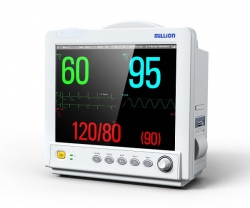Wechat QR code

TEL:400-654-1200

TEL:400-654-1200
Research progress of cerebral vascular and internal carotid artery muscle fiber dysplasia
Fibromuscular dysplasia (FMD) is an idiopathic, segmental, non-inflammatory and non-arteriosclerosis vascular disease. FMD occurred mainly in the 20 ~ 60 years old women, but there are male and age longer single case, the main artery lesions involving the systemic, mainly involving renal artery, followed by the internal carotid artery, can appear vascular stenosis and aneurysm and arterial dissection, this is mainly due to the vessel wall collagen hyperplasia, elastic layer in the chaos caused by the destruction causes blood vessels in the membrane structure. With the progress of angiography, the number of FMD cases in cerebrovascular and internal carotid arteries increased. Studies have shown that FMD is closely related to acute hemorrhage and ischemic stroke. Therefore, this paper reviews the FMD of cerebrovascular and internal carotid artery.Meilun
1. An overview of the
1.1 etiology and epidemiology
FMD mainly occurs in women aged between 20 and 60 years old, with obvious gender bias. Its etiology is still unclear, which may be related to genetic, endocrine, arterial wall ischemia and other factors. There is a certain correlation between the incidence of FMD and genetic factors. Some studies have found that the incidence of FMD in the renal artery of the first-degree relatives of FMD patients is more common than the general population. In addition, although the association between FMD and endogenous and exogenous hormone levels is not clear, the correlation between oral contraceptive drugs and endogenous hormone levels and FMD has not been proven. In addition, current studies have found that smoking and a history of hypertension have a clear role in promoting the development of FMD. The exact incidence of FMD is difficult to calculate, with a reported incidence of 0.3%~3.2%, but this data is not applicable to a wide range of people, because the occurrence of the disease is mostly asymptomatic, and currently only in the presence of neurological symptoms will be the appropriate vascular examination.Meilun

Over the past 25 years, MaYo medical center in the United States in 20244 cases of patients with continuous autopsy, found only 4 cases (0.2%) and cerebrovascular and internal carotid artery FMD, it shows that the incidence of cerebrovascular and internal carotid artery FMD is very low, and cerebrovascular and internal carotid artery FMD is renal artery FMD detection rate is lower, this is mainly due to renal artery FMD often accompanied by symptoms of high blood pressure, and cerebrovascular and internal carotid artery FMD is usually asymptomatic.
1.2 clinical manifestations
The clinical manifestation of cerebral vascular and internal carotid artery FMD is correlated with the location and stenosis degree of pathological changes in the artery, and the occurrence of clinical symptoms is related to one or more mechanisms, such as: (1) severe vascular stenosis and perfusion insufficiency. (2) thrombosis. The dissection of an artery. (4) ruptured aneurysm. The present study found that patients with cerebrovascular and internal carotid artery FMD often asymptomatic, even if clinical symptoms are often nonspecific, such as headache, dizziness, tinnitus and neck pain, but a syncope, exophthalmos, carotid artery static specific neurological symptoms, such as, loss of brain function often prompts transient ischemic attack (TIA), cerebral infarction, internal carotid artery cavernous sinus fistula, subarachnoid hemorrhage. For example, when the involved vessels appear serious lumen stenosis or occlusion, resulting in cerebral tissue perfusion insufficiency, causing cerebral infarction; When the disease involves the cerebral blood vessel and causes the aneurysm, the subarachnoid hemorrhage of artery rupture may occur. When involving vertebral artery and internal carotid artery, TIA, Horner syndrome and other neurological symptoms can occur.
1.3 pathological and imaging findings
The pathological changes of FMD pathological vessels are characterized by hyperplasia or thinning of smooth muscle, destruction of elastic fiber, hyperplasia of fibrous tissue and disorder of arterial wall structure. According to the main levels of arterial involvement, the lesions were divided into three histological types: intima, media and outer membrane FMD, among which media is the most common, accounting for 90%~95% of FMD patients. FMD affects the main body, mainly in the renal arteries, the second is the internal carotid artery, 25% FMD patient involvement cerebrovascular, internal carotid artery accounted for about 95% of the patients with cerebrovascular FMD, bilateral internal carotid artery involved accounts for 60% ~ 80%, and intracranial artery FMD is rare, but intracranial internal carotid artery, middle cerebral artery (MCA), before the cerebral artery (ACA), basal artery, posterior cerebral artery (PCA) is also visible to match the FMD vascular anomalies.
For imaging examination of FMD mainly includes: color doppler ultrasound, CT angiography (CTangiography, CTA), magnetic resonance angiography (magnetic resonance angiography, MRA), cerebral digital subtraction angiography (DSA), the color doppler ultrasound examination can show the neck vascular stenosis degree and vascular morphology, and FMD often affect carotid cosco end and vertebral artery of C1 ~ C2 levels, so the color doppler ultrasound examination is difficult to detect deep lesions.
At present, it is found that CTA and MRA have certain effects on vascular lesions caused by FMD, but the sensitivity of their diagnosis has not been effectively proved, and the sensitivity is 28% and 22% compared with DSA. Although DSA is an invasive operation with certain risks, it is still considered as the gold standard for the diagnosis of FMD. FMD patients cerebral angiogram mainly for the following three types, Ⅰ type: a typical beaded, by how much involvement of vascular lumen stenosis and expansion appear alternately, is characteristic of membrane FMD changes (figure 1 a); Ⅱ type: long tubular narrow, in vascular intima deposition of collagen, the elastic plate division is shown in figure 1 (b), see more at lining FMD, should with carotid artery dissection, artery inflammation, congenital dysplasia and internal carotid artery space-occupying lesions caused by oppression that differentiates carotid artery stenosis; Ⅲ type: damage concentrated in the side of the vessel wall, show the aneurysm model change, see more outside membrane FMD (FIG. 1 c).
Figure 1dsa examination of FMD patient 1A left carotid artery 1B left internal carotid artery C1 segment 1C left internal carotid artery C6 segment
2. Treatment and prognosis
At present, the treatment of cerebral vascular and internal carotid artery FMD still has no unified treatment guidelines and efficacy evaluation system, the formulation of the treatment plan mainly based on the patient's clinical symptoms: (1) for asymptomatic patients, no special treatment, using observation and follow-up. (2) anti-platelet or anticoagulant therapy can be given for the occurrence of ischemic events. The anticoagulant warfarin is generally not recommended for the treatment of FMD. If there is neck dissection, anticoagulant therapy is preferred for those without clinical symptoms, and antiplatelet therapy is recommended after 3-6 months. However, there was no significant difference between anticoagulant therapy and antiplatelet therapy in preventing stroke recurrence. (3) if the symptoms of oral antiplatelet therapy still exist, consider balloon dilation; if there is artery dissection or restenosis after balloon dilation, consider stent implantation. (4) for cerebral artery FMD patients with intracranial aneurysm formation, aneurysm embolization or clipping is feasible; For wide-necked aneurysms, SolitaireAB stent-assisted coil therapy should be considered. In recent years, it has been found that endovascular stent has gradually become an effective method to reconstruct the true vessel of the interlayer. 6 for cerebral artery FMD patients, in addition to intracranial aneurysms, revasmosis therapy is not recommended for patients with clinical symptoms, and drug therapy, especially anti-platelet therapy is its main treatment. The prognosis of FMD patients is inconclusive, and more case follow-up is needed.
3. Looking forward to
In the past few decades, only limited progress has been made in the study of cerebrovascular and internal carotid artery FMD, such as insufficient studies on genetics, imaging and treatment. In recent years, some countries and regions have provided medical support for FMD patients and some funds for FMD research and study. However, at present, there are still many problems that have not been solved, such as: (1) the exact incidence of FMD in the population. (2) the pathogenesis of FMD, such as genes, environmental factors, hormones and so on. (3) the higher incidence of women's reasons. (4) FMD is often found in artery or artery dissection. 5. FMD patients with severe vascular tortuosity and expansion of the reason. These questions need to be further studied to further reveal the pathological mechanism of the disease and the risk of the disease, so as to develop appropriate treatment plans.